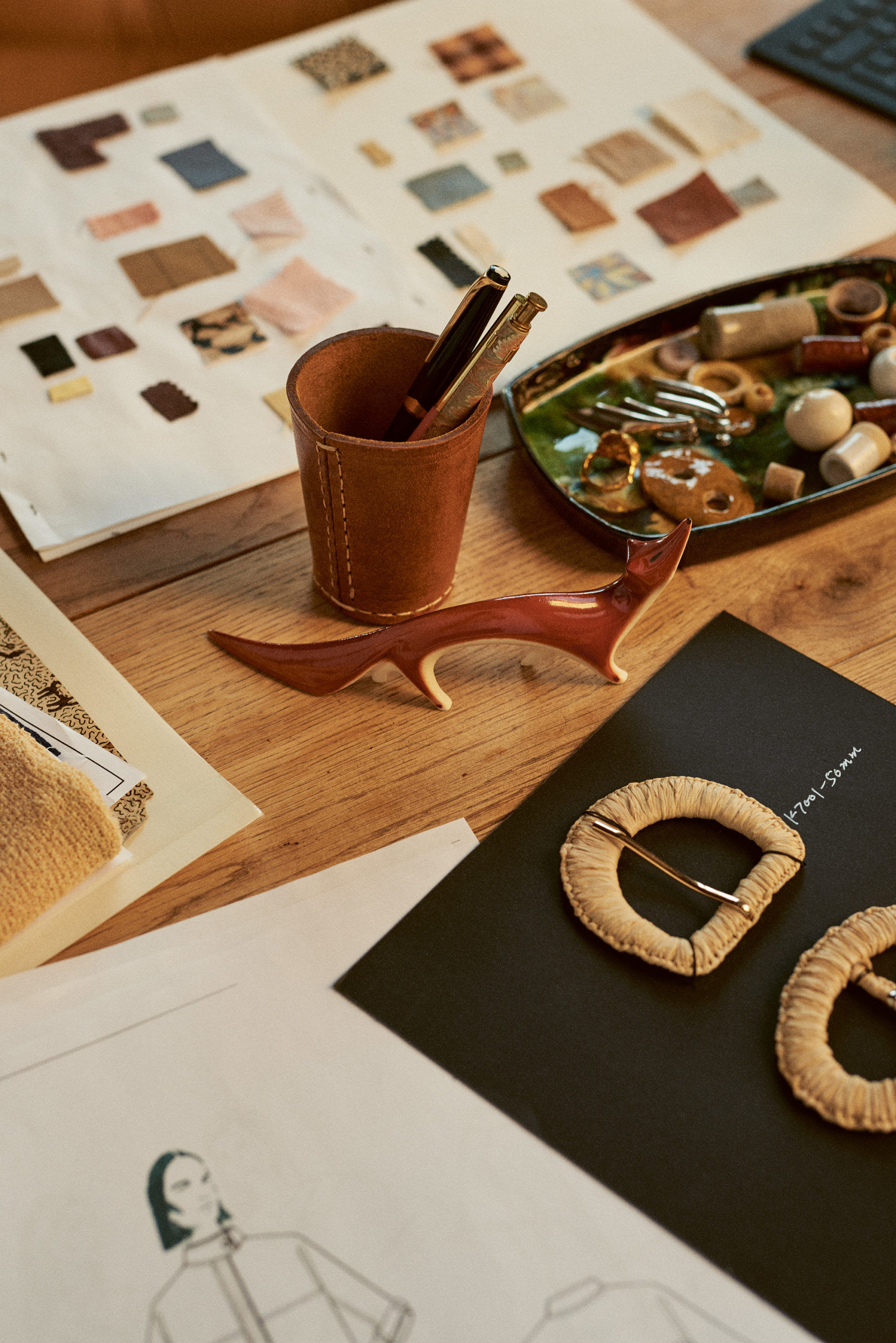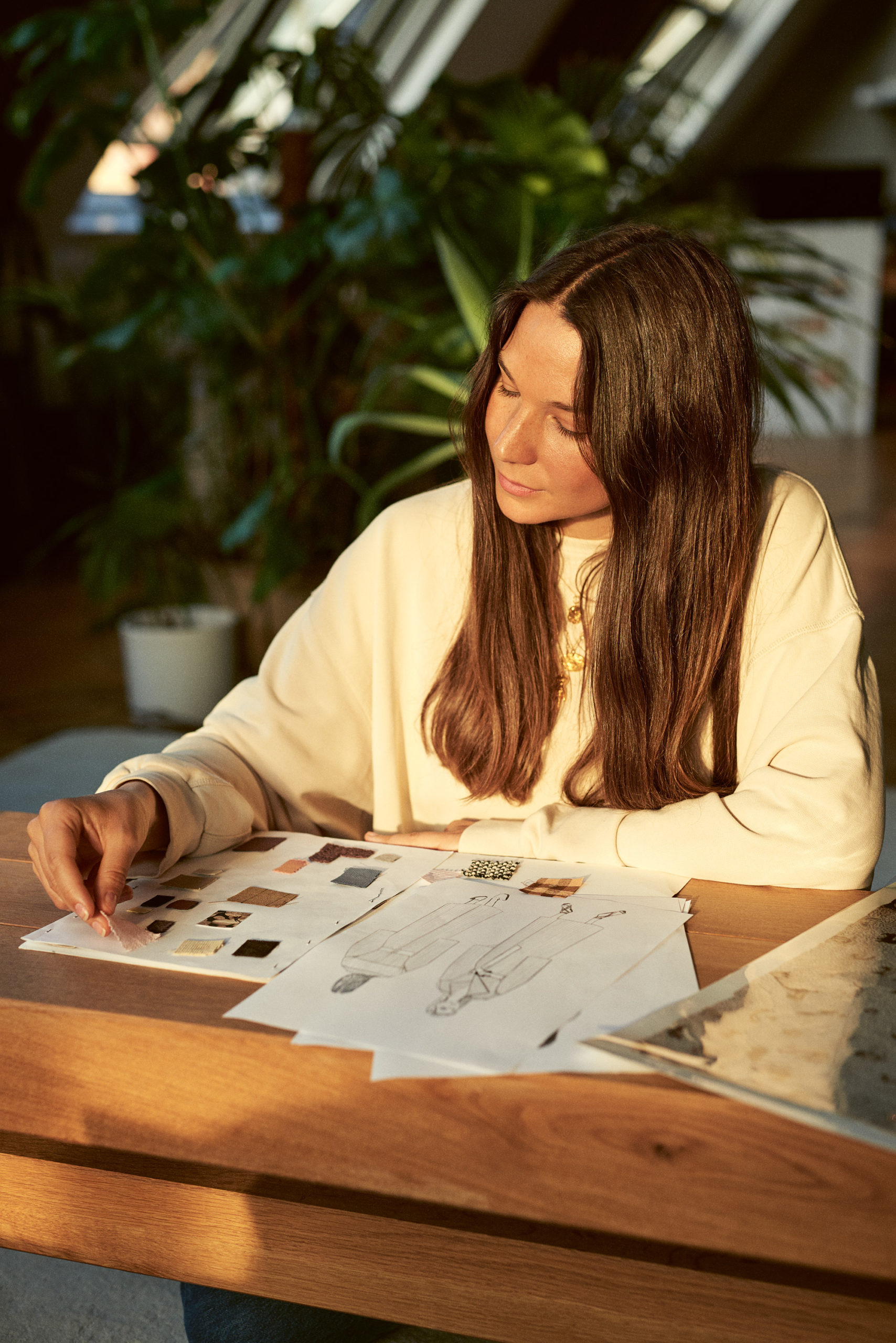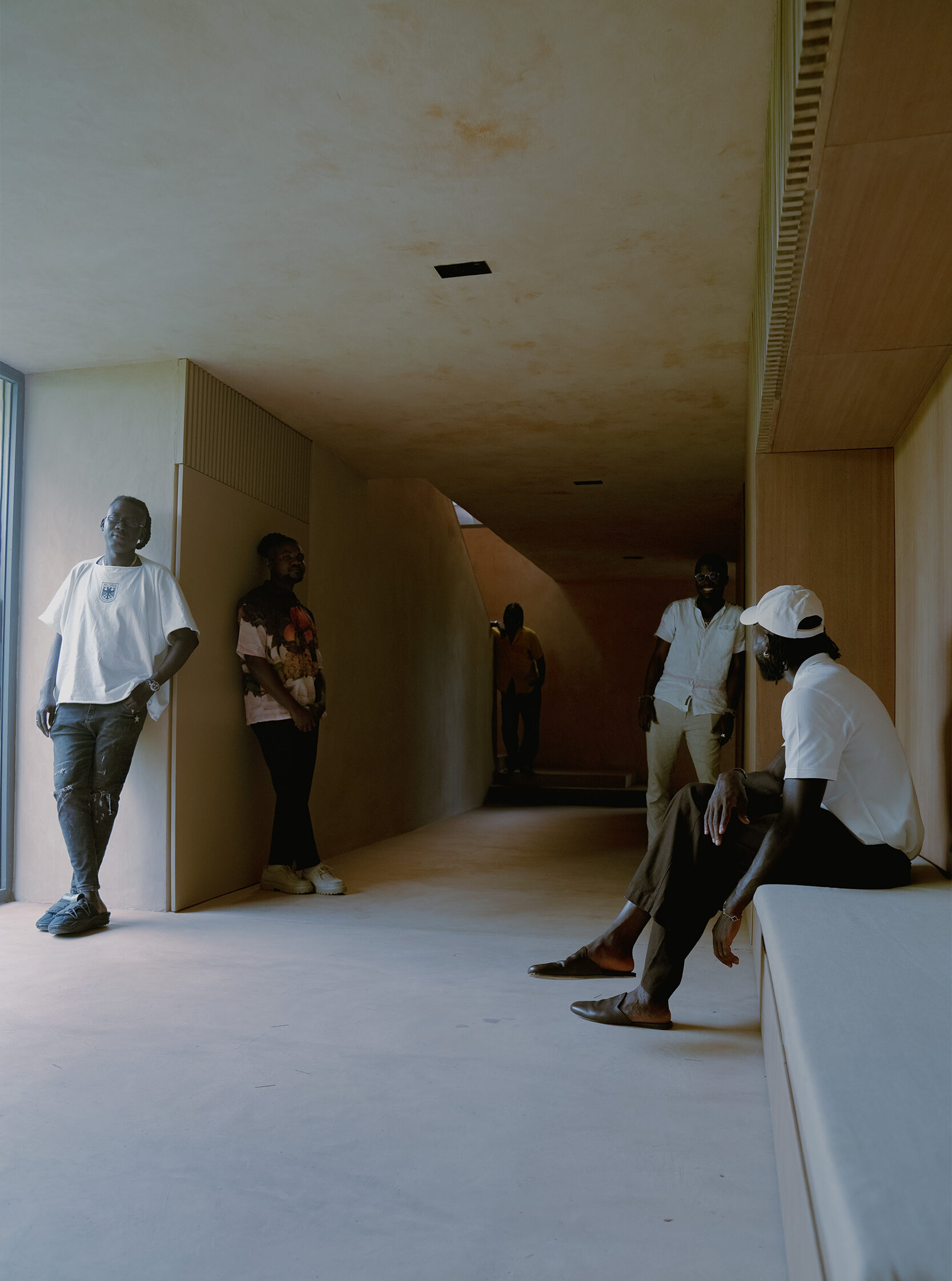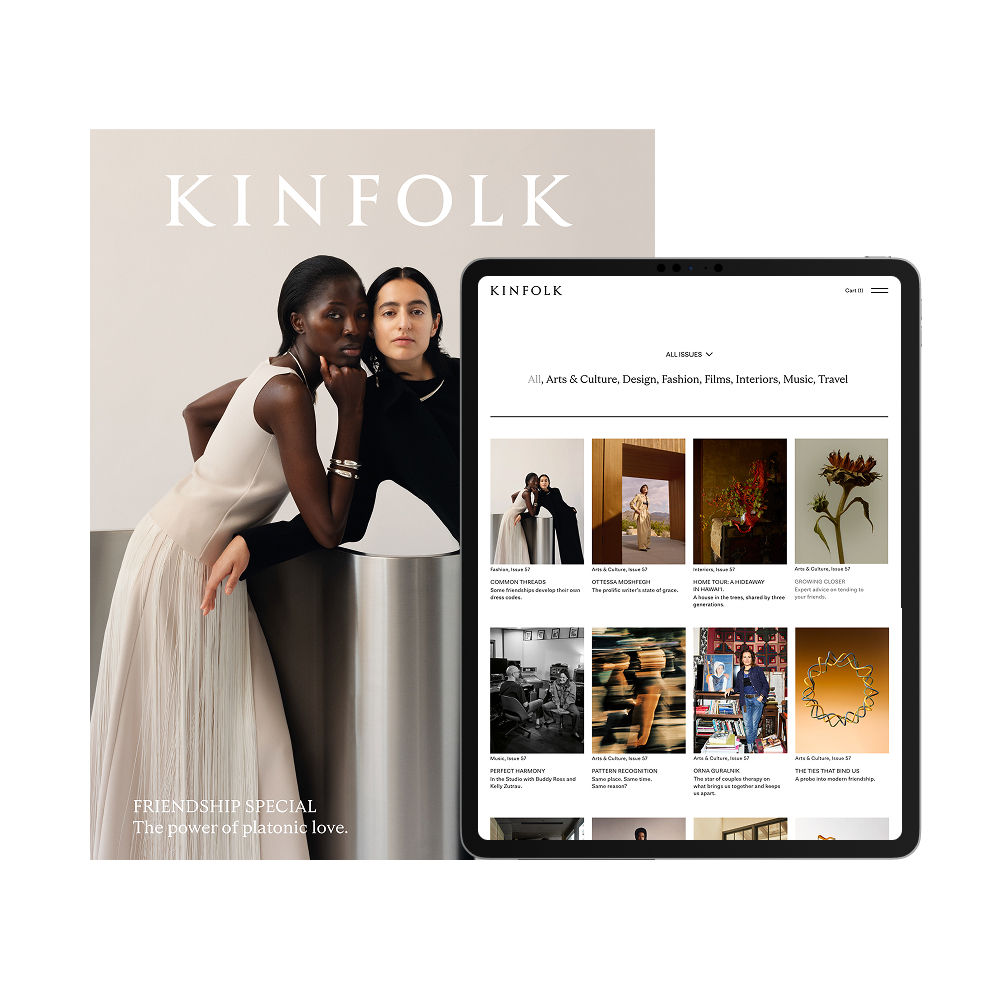At Home With: Nanushka

Meet the bold couple who took their Budapest brand global.

"Pleather" (plastic leather) has typically been derided by the fashion industry as a cheap substitute. Rebranded as "vegan leather," however, the material has become a popular choice for ethically conscious consumers. A 2017 vegan leather puffer jacket helped Nanushka become a globally recognized brand.
“We were close to bankruptcy a couple of times. I had to sell my apartment.”
Amid the churning tides of fashion, designers come and go in droves, all dreaming of inspiring the way we dress. The odds caution against it. I, for one, spent years attempting to forge an existence as a jewelry designer. “Many are called,” my father would warn me in his slowest, most ominous drawl; “few are chosen.” He was discouraging. He was also frustratingly correct.
What buoys the winning designers to a place in our wardrobes? Sandra Sandor, founder of the audaciously successful Budapest-based brand Nanushka, was raised on a rallying message. Her mother had launched one of the first privately operated lines of children’s clothing in Communist Hungary, defying some fairly perilous odds under a regime that discouraged such aspirations. Sandra started her own women’s clothing line in 2005—immediately after graduating from the London College of Fashion, forgoing the customary internship with an established designer and resisting the pull of one of the world’s fashion capitals.
“I was 22 years old, and I was quite brave actually,” Sandor tells me with a smile. “London was tempting, but I felt I could be based in Budapest and grow an international brand as a sort of cultural mission for Hungary,” she says. Her confidence sounds like a wonderful place to be. Nanushka became known for designs that are flamboyant yet contemporary, often tailored into crisp, original silhouettes. But they are also pieces designed to outlast seasonal trends.
Sandor is speaking on a video call from a country house outside Budapest. She shows me around her rural lodgings—a canopy bed under a pitched wood ceiling, an expanse of grass outside, shaded by a fulsome oak tree—but her wonky countryside Wi-Fi reveals only impressionist dabs of colored pixels. On the adjacent computer window, Peter Baldaszti, her fiancé and CEO, tunes in. Broadcasting against a stark white wall in the Nanushka office in Budapest, he squints into the camera. “Sandra always knew how to design to make customers happy,” he tells me. To succeed, “she just needed the structure to empower her creativity with the right framework and team structure.”
“At the beginning, my mom provided a safe space for me,” Sandor explains. She is talking both literally and figuratively. Nanushka, baptized in honor of Sandor’s childhood nickname (she mispronounced her own name as “Nany,” which became the diminutive Nanushka), was launched from her mother’s garage, where the designer knocked together a showroom and office. She spent the first five years as her own saleswoman. “I love the act of selling. I loved to be on the shop floor. Maybe my mom taught me this, but I think it’s just something that’s in both of us. I’m a little merchant deep inside,” she says.
Sandor’s vision for her clothing line was expansive. For her mother, Hungary was sufficiently vast; Sandor, born in 1982, was young enough to experience the world not from behind the Iron Curtain but from Hungary’s new position as part of a globalized society. “I always saw Nanushka as an international brand,” she says. And she always believed in its success. “It was challenging—we were close to bankruptcy a couple of times. I had to sell my apartment in the 2008 crisis. But I was always optimistic.” When Baldaszti came into her life, Nanushka had been leaking money for years, and sales were still mostly limited to Hungary despite Sandor’s worldwide ambitions. He became her boyfriend in 2013, then, in 2016, her CEO and business partner.
“With all the failures I’ve gone through, I’ve managed to gain some business acumen,” Baldaszti deadpans, fingering the collar of his black turtleneck. “I’ve been an entrepreneur ever since I was 19.” Nanushka marked his first stint in fashion, after career leaps from tech to hospitality, yet he was sharp-eyed in his plans for the brand: investment, expansion, more investment, more expansion.
“It was,” he pauses, and furrows his dark eyebrows, “terribly difficult to drum up investment at first. I had never worked with a professional investor before.” It took 15 months, but he injected about $3 million into the brand in partnership with a venture capital firm, GB & Partners. In addition to cash, they provided “a big brother eye watching over you,” as Baldaszti describes it, which forced the business to incorporate detailed reporting, firm deadlines and structure.“Emerging designers need partners,” says Baldaszti. “They need investors and [wholesale and PR] agencies, and it’s crucial to be open-minded and learn from these people. Being successful in fashion is a huge team effort.”
Sandor and Baldaszti had hoped to get married this year; instead, the pandemic has postponed the festivities to next summer. Still, the couple has much to celebrate with Nanushka already: The brand has a loyal following online and is stocked by high-profile international retailers—Bergdorf Goodman, Saks Fifth Avenue, Browns, Net-a-Porter and Mytheresa among them. It brought in $23.5 million last year, 25 times more than when Baldaszti first came on board. Nanushka added menswear in 2018, and launched a flagship shop in Budapest in 2017, followed by a second location in New York’s SoHo neighborhood last fall.
But 2020, which marks the brand’s 15th anniversary, and the couple’s seventh, is tumbling fashion giants and fledglings alike. For Sandor and Baldaszti, however, optimism and expansion continue to be the order of the day. As we speak, their New York store is still shuttered for the lockdown, and the fashion press is mourning the likely doom of physical retail, but the pair discusses bright plans for the inauguration of a London shop in September. The location would host a showroom, office and, on the top floor, a Nanushka-branded hotel room. A big step. A big investment in risky times.
Even as they’re working on international expansion, Sandor is also focused on sustainability, which has guided her since the brand’s founding. As she’s become more educated about the environmental impact of the fashion industry, and had more options open to the company as it has grown, she says she’s been “trying to improve in little steps each season.”
How to pair the contrary goals of growth and sustainability? There is no creative success in fashion without capitalist expansion. Yet among the new generation of designers, many are trumpeting sustainability, longevity and pared-down essentialism. “It’s not black and white,” Sandor says. “It’s tough because sustainability is quite important to me, but aesthetically I’m a maximalist.” Increased sustainable offerings have somewhat helped her settle between the two. Nanushka uses organic cotton and recycled cashmere. Its most popular designs have been separates in vegan leather—a polyurethane-based alternative to animal hides. The material comes with its own polluting problems but, as Sandor points out, it has one-third of the environmental impact of cow leather.
“Durability and functionality are values that, for me, are equal to beauty,” she says, her features still aglow with country sunlight. “In terms of sustainability, design has a very responsible role.” Sandor thinks about what the future holds and says, “After the pandemic, we’ll all be craving more physical contact and physical experiences. This period just reassured me about the importance of following our own values.”


Nanushka's "babou" slippers mimic the design of Moroccan babouche, with a pointed end and folded-in heel.



